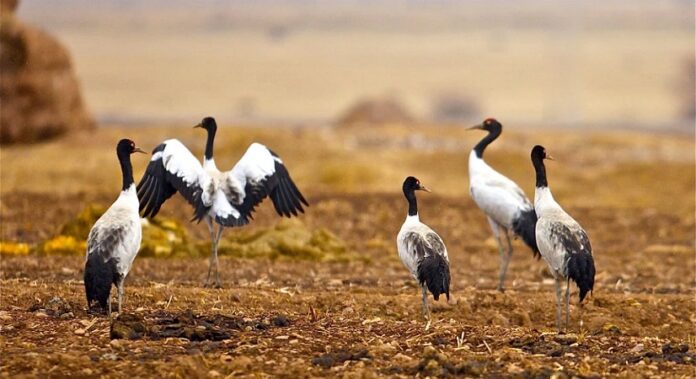The Wildlife Institute of India and the Zoological Survey of India have been carrying out assessment of the black-necked cranes. As per the survey conducted by the Wildlife Institute of India in 2016-2017 in Ladakh region, the population size of black necked crane was around 66-69 individuals.In Arunachal Pradesh, a small population of approximately 11 individuals arrives during winter months.
Steps taken to protect bird species
The Black-necked Crane (Grus nigricollis) is listed in Schedule I of the Wild Life (Protection) Act, 1972, thereby according them the highest degree of protection.
The species is also listed in Appendix I of Convention on International Trade in Endangered Species of wild fauna and flora and the Convention on conservation of Migratory Species.
The important habitats of Black-necked Crane have been notified as a Protected Areas, for example, Changthang Sanctuary, Ladakh.
The Tso Kar Wetlands Complex, an important foraging and breeding ground for Black-necked Crane has been designated as a Ramsar Site in December 2020.
The National Wildlife Action Plan (2017-2031) released by the Ministry in October 2017 provides for specific Chapters and priority actions on various aspects of wildlife conservation like, conservation of threatened species, mitigating human wildlife conflict, conservation of inland and coastal and marine ecosystems, landscape level conservation, etc.
The Central Government provides financial assistance to State/Union Territory Governments under the Centrally Sponsored Schemes ‘Development of Wildlife Habitats’ for management of wildlife and its habitat in the country.














